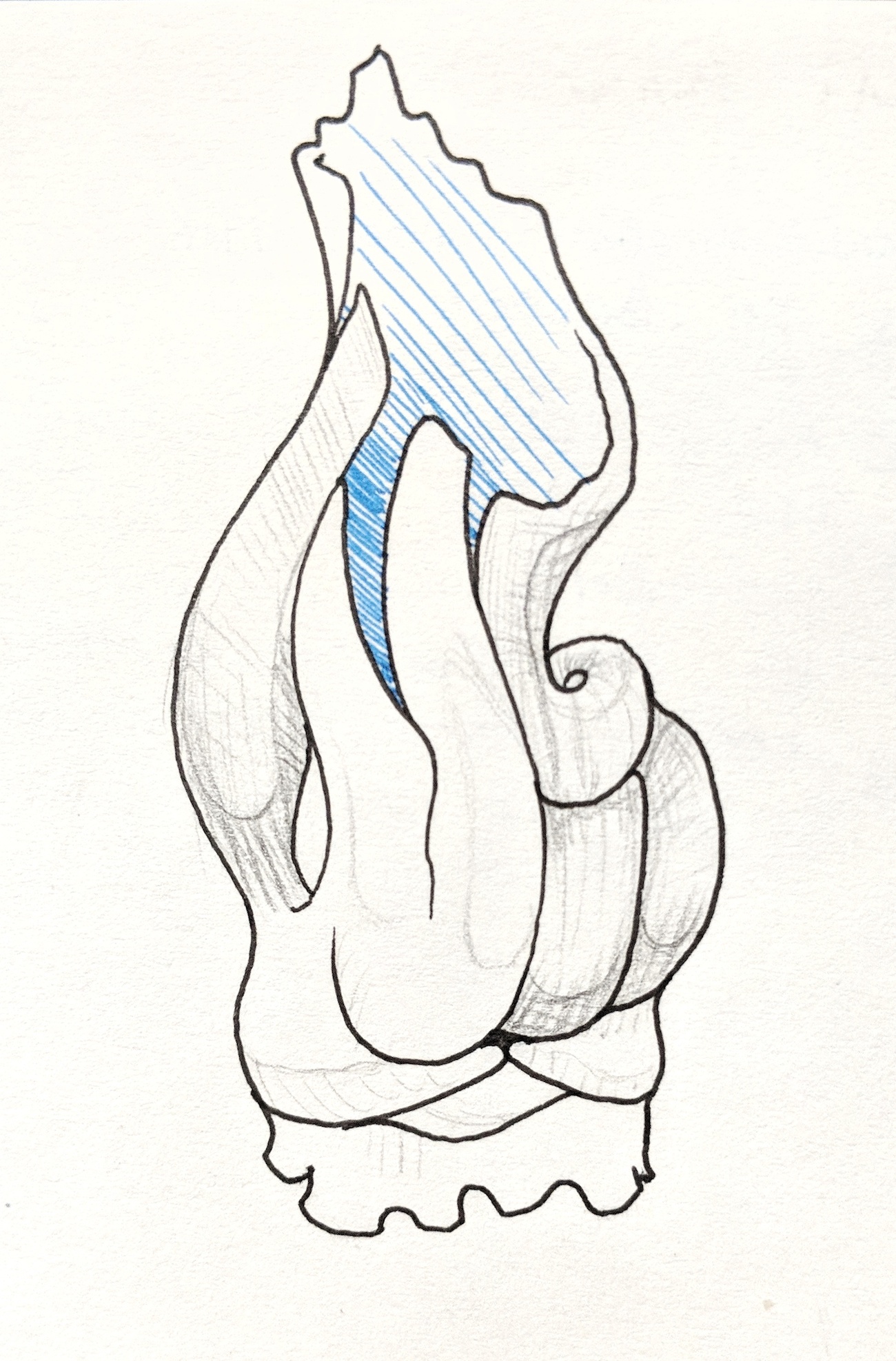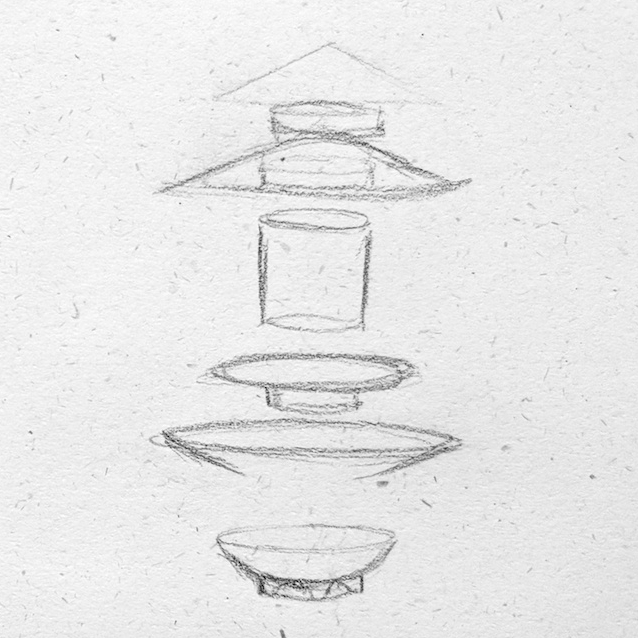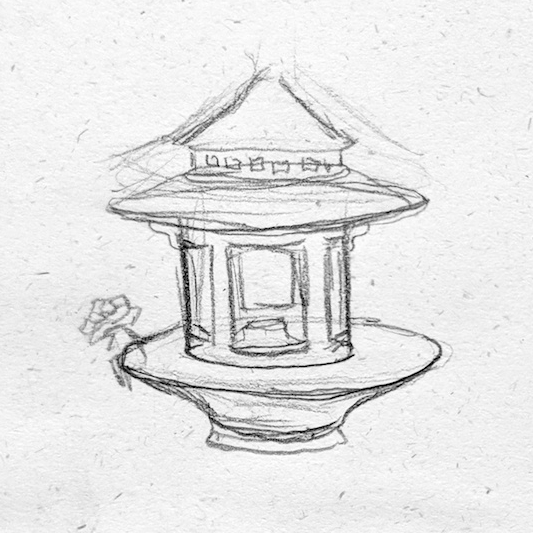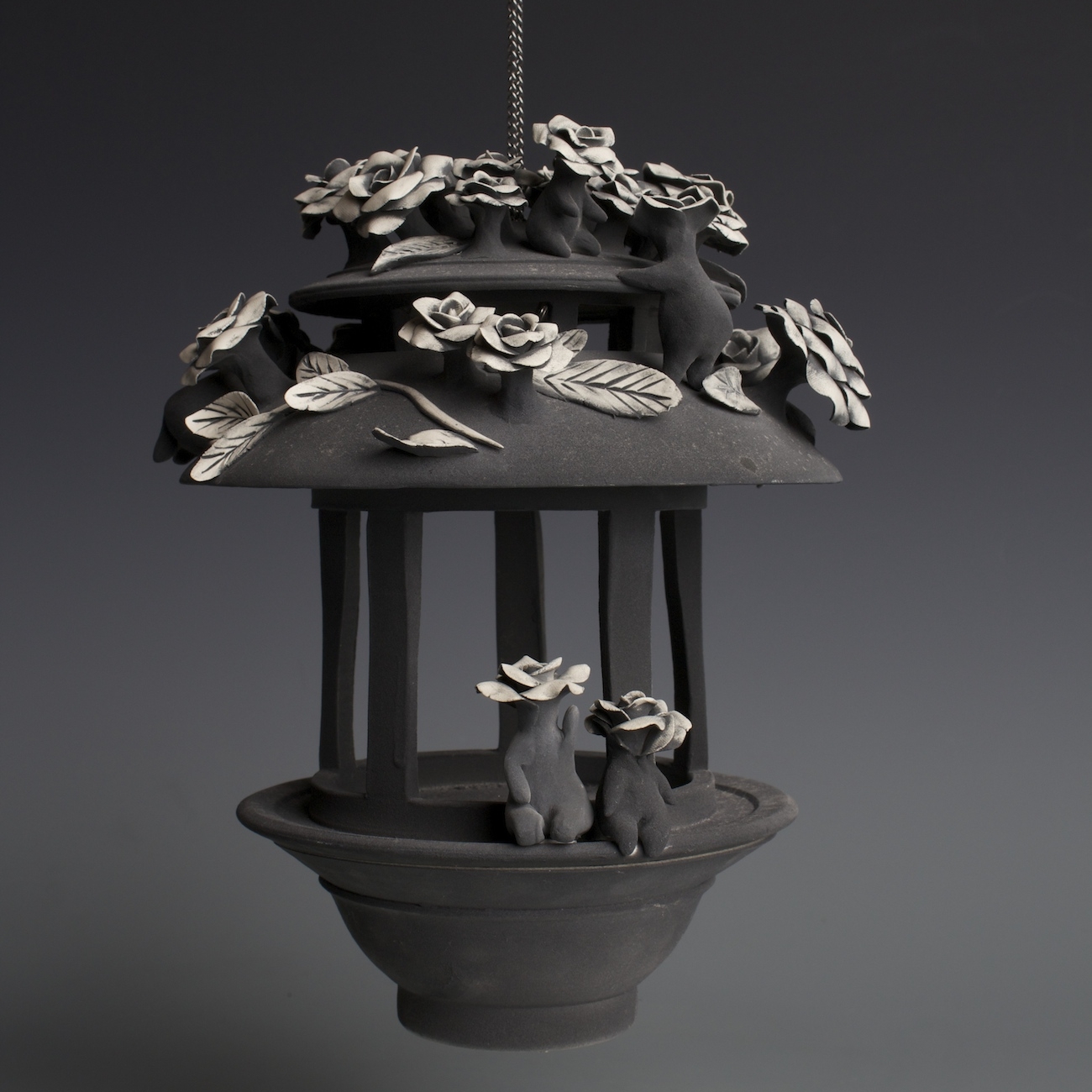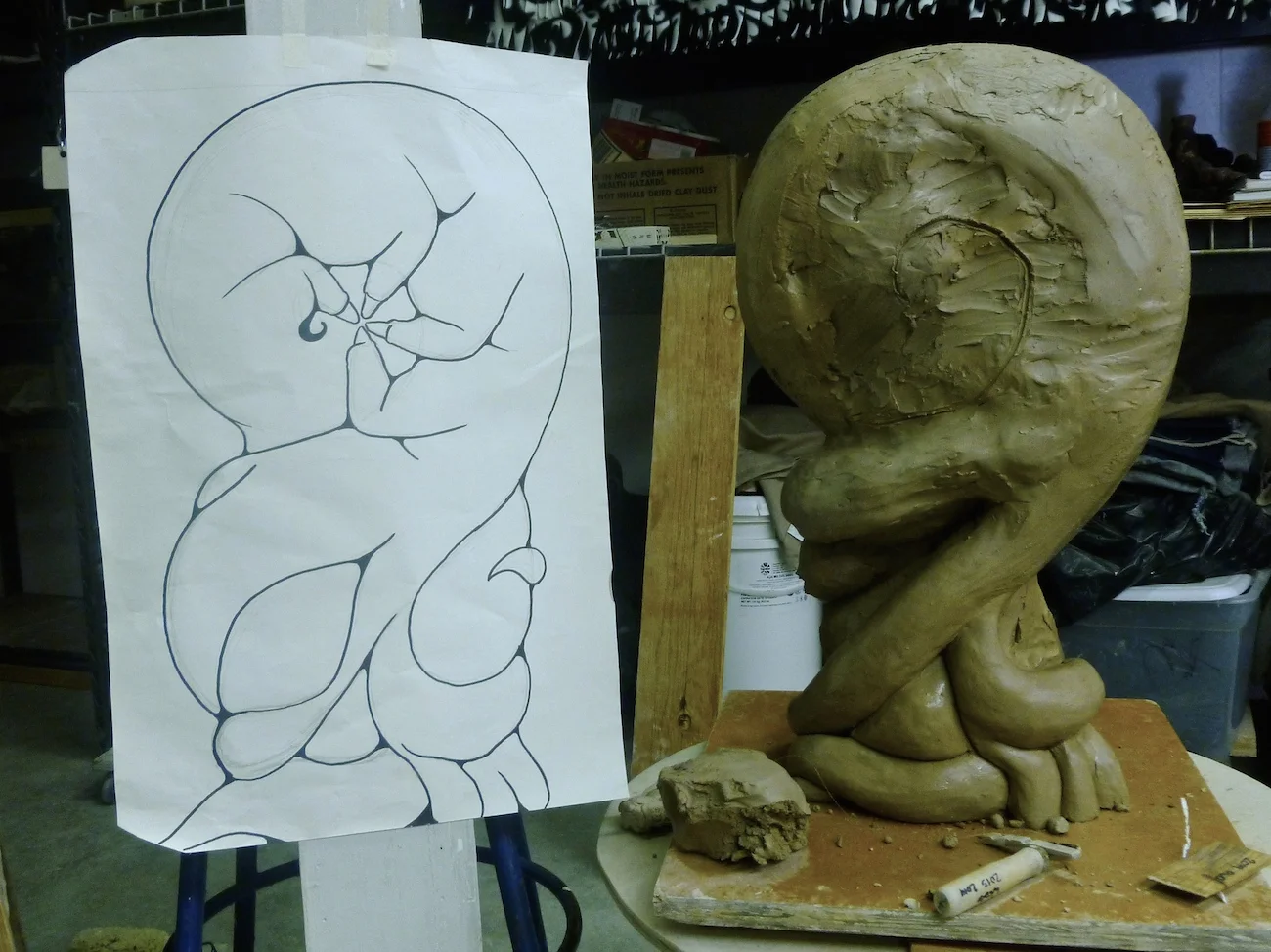My Art Process
Moth Reliquary / Stump
Concept Sketch
Often people will tell me that my work looks just like the original sketch. I like to sketch my projects beforehand to figure out what I want it to look like and develop the idea behind it. My goal is to try to work out everything beforehand, to avoid as many speed bumps as possible during the creating process.
The Fundamentals
I was taught that developing techniques comes first, then personal style and creativity follow. It's important to become proficient in various mediums as a foundation, to be able to replicate from references and life, to understand light, shadow, color, and why something looks the way it does. These are all good skills to have that will set you up for future endeavors, but it helps to give your work credibility too. If I see something that looks very loose and gestural, I'm more likely to believe that the style was purposeful if I know that the artist can also achieve a precise and realistic piece.
I find ceramics interesting because it can have a high rate of technical failure. It's a medium that demands learning the foundation skills, otherwise your piece can literally be destroyed. It's very easy to end up with "flaws": cracking, warping, fragility, shrinkage error, glaze defects, explosions, etc. In the past I've seen ceramic work that looked sloppy and had "flaws"; the artist would say that it was a purposeful choice and I wondered but would you be able to recreate it without the flaws? More often than not, I don't believe so, especially if I haven't seen versions of their work that say otherwise.
For instance, there was an artist who decided to make a handbuilt vessel on a much larger scale than anything that this person had made before. In the end the piece made it through the glaze firing, but lacked essential components of the original concept and also had some "flaws", including an enormous crack and dingy glaze color. The flaws were made out to be purposeful, but had never been mentioned in the original idea. To me, it just looked like the result of technical mishaps and poor time management- the crack looked like a result of improper clay compression and stress during the firing; the color looked like a result of using an untested glaze in the wrong atmosphere. If the artist made more renditions and did some testing, it would have looked closer to the original idea.
My Art Philosophy
I don't think that there's anything wrong with spontaneity. Maybe you see an interesting possibility when you're creating and have an urge to follow that sense, perhaps it leads to a wonderful outcome that leads to more possibilities. My belief dwindles when you don't further explore the off-shooting idea, or if you don't go back to execute the original idea.
Unfortunately, I feel like there are many instances of -for lack of a better term- BSing during critiques. I'm sure there are many reasons why people do this. One reason I've heard is that it's about making a stance and being able to defend your work. I think this would make sense if you're defending something you feel strongly about, however it seems close-minded to defend mistakes; how can you improve if you think you're doing everything you need to already?
From Sketching to Building
With all this in mind, I strive to create pieces that are well executed in terms of technique and craft, but also align with my original intent (walking the walk). In order to achieve this, I start with planning and detailed sketches. Sometimes my ideas start off from an interesting form or shape, other times from a concept or specific detail. I will sketch something that incorporates those ideas, erasing and redrawing as many times as I need to until it satisfies me aesthetically. Once the sketch is mostly worked out, I think about how I would make it into a three-dimensional object. I'll alter the sketch if there are any components that will make the process too difficult. Some questions I ask myself: What materials do I need? What's my timeline? What steps do I need in order to create this? How do I get it into the kiln? What will the finish be? After editing the sketch, I'll finalize it ink.
Having a clear idea assures me that what I'm creating will take me somewhere I want to go. I wouldn't create from a sketch if I didn't like the sketch to begin with. Sometimes if I start creating without a clear idea, it will start to turn into something I don't like, then ill give up on it. This is just my personal way of working; some people like to leave it open ended and that works very well for them.
Since most of the planning has been worked out, I can usually jump into creating. However, things don't always go as planned. I think resourcefulness is very helpful in problem-solving. If I'm having trouble with scaling a piece, I will make a true-to-size drawing for comparison. Sometimes I'll need to make an additional component just for support or protection of the piece. Sometimes it just takes trial and error to figure out how to make the idea. I try to stick to the sketch as much as possible, but I make compromises when I feel it's necessary.
Overall, I'm a control freak over my work. I want to make the most of my time by making something that I can be satisfied with, especially since it's like a smaller representation of myself. I'd hate to put something out knowing that it lacked integrity. I think that when you really care about what you're doing, it will show and others will be able to appreciate it more.
I hope that this blog gave some insightful information about my art process. It's not for everyone, but it could be interesting to try out >w<
Happy making!
Shannon


